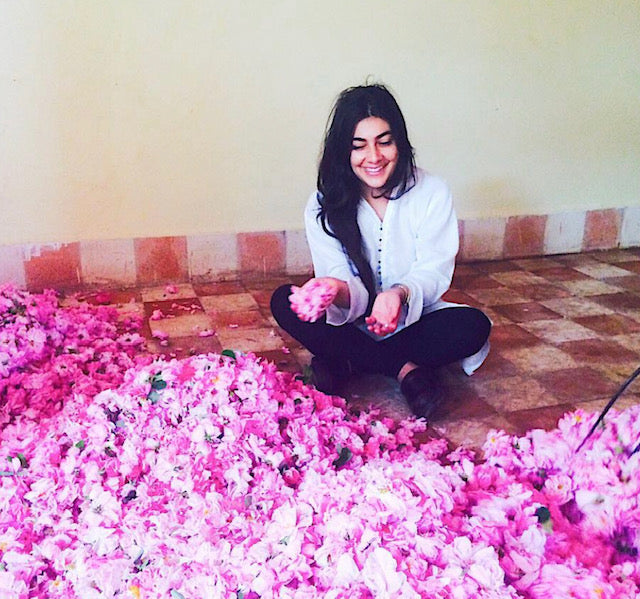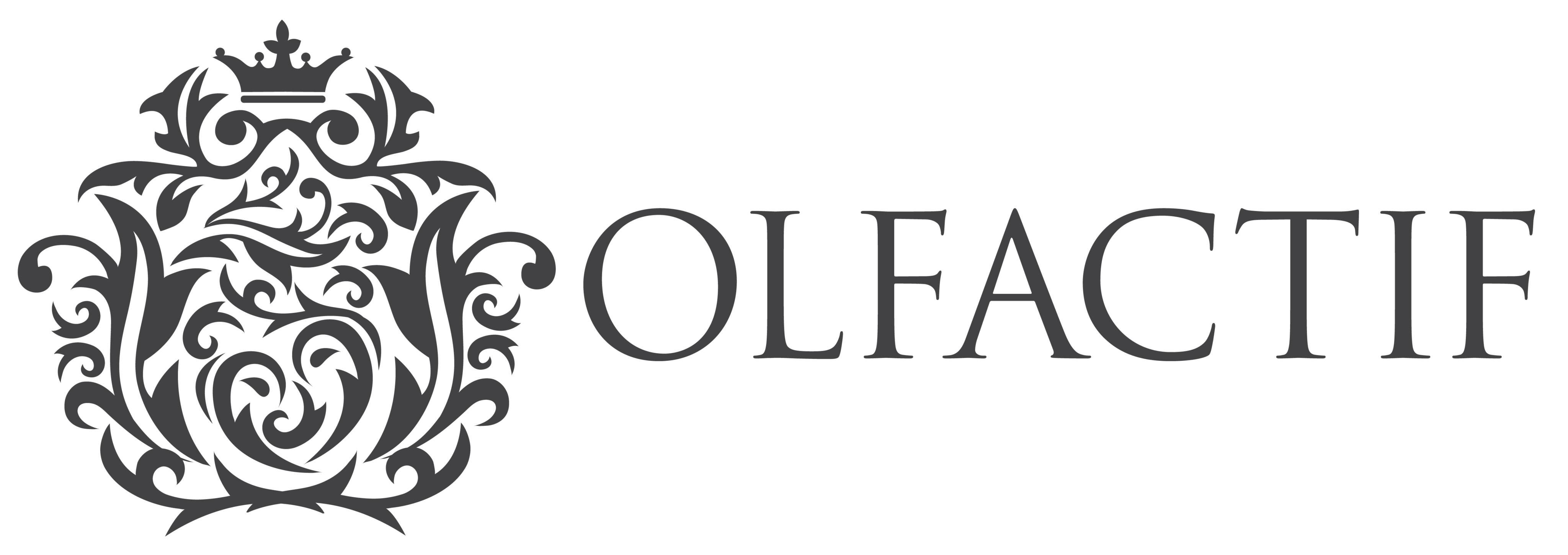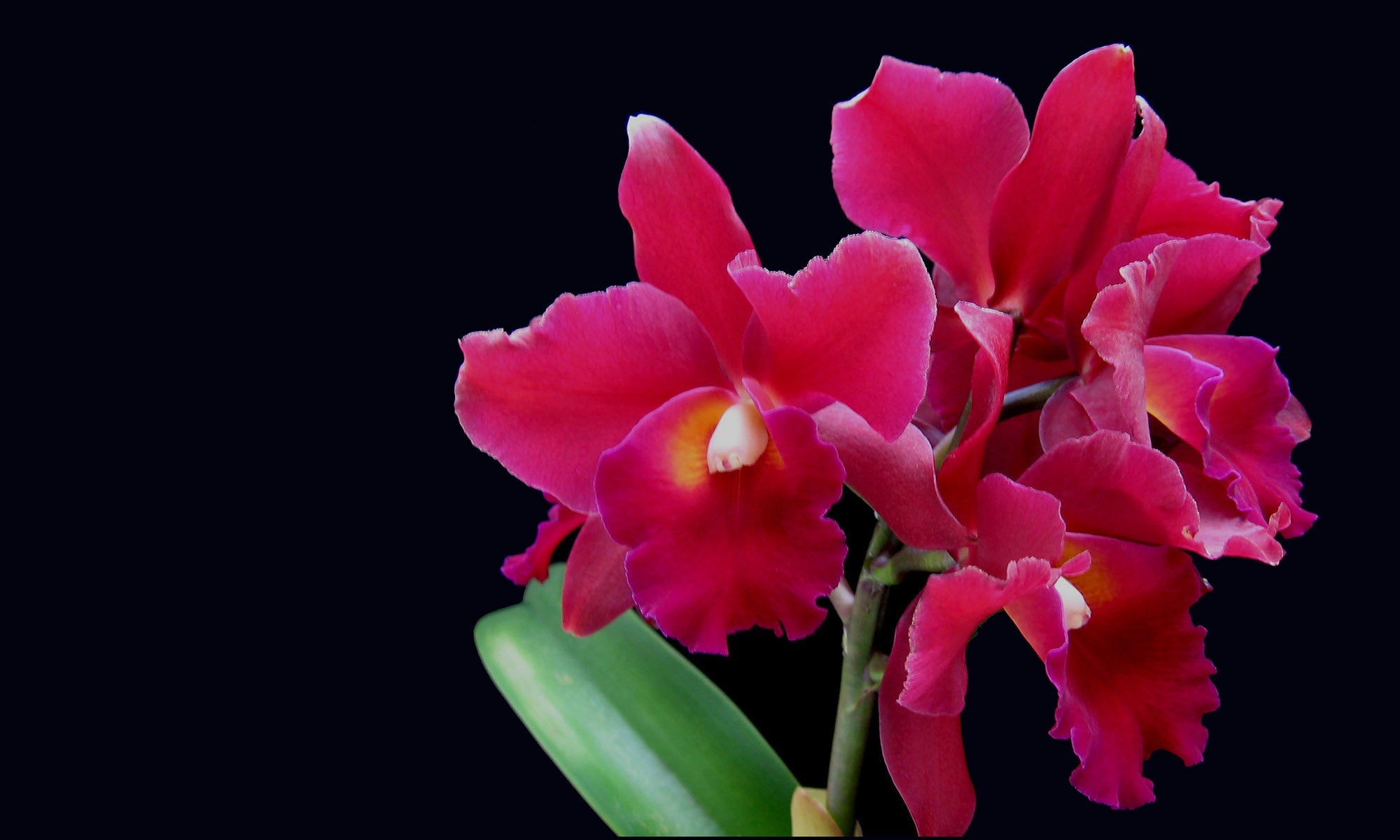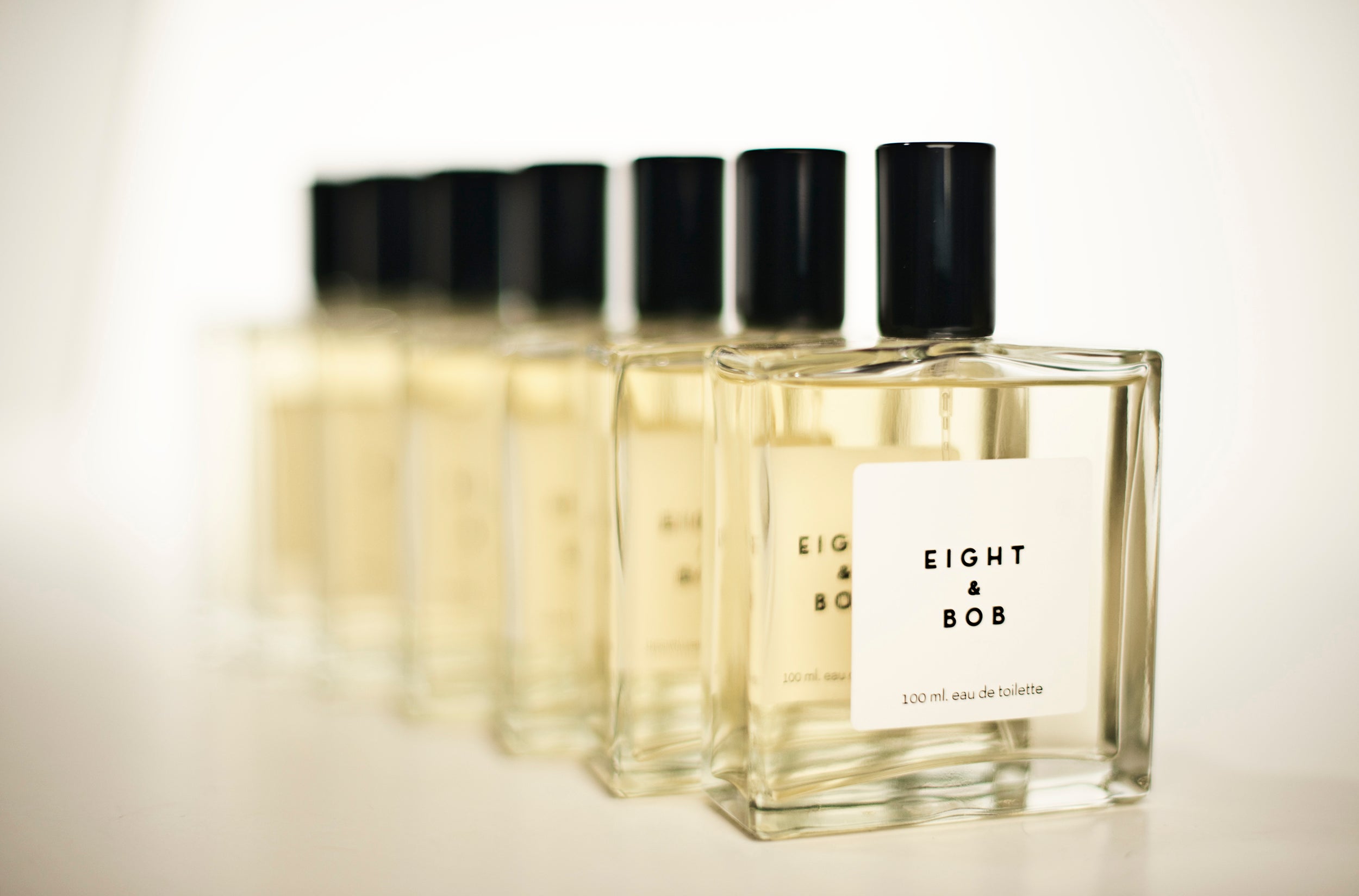
Kismet Olfactive: Q&A With Founder and Perfumer, Shabnam Tavakol
Say hello to Shabnam Tavakol, founder and perfumer of Kistmet Olfactive! Learn how her Iranian background and Parisian roots has great influence on her creations as you discover what time of day she finds herself working at the bench in harmony with her surroundings and what it means to be a bohemian perfumer. We'll also take a deep dive into the inspiration behind her first fragrance, Nostalgia, and how leather, flowers and anise play a role in this sonnet in a bottle.
Come with us as we journey around the world with perfumer, Shabnam Tavakol.
Q: First, tell us why you named your company Kismet?
Kismet is the English spelling for Farsi Qismat. It’s a word that was frequently used in my Iranian household and upbringing. It basically means what is meant to be. Not in the overly melodramatic “fate” way but more so in the simple ways that life just aligns as it should.
Since my embark into perfumery– it has more or less felt like a sequence of events that have been undeniably “meant to be”. There just isn’t a more all-encompassing word to represent my fragrant passage.
Q: You often call yourself a bohemian perfumer. Can you explain that more?
Oui. One vivid afternoon while I was living in Paris, I met with Delphine de Swardt at Chez Prune, on the Canal. Delphine is one of the great fragrance historians // storytellers of our time. We had drinks and great conversation over several hours. For a good portion of the date she engagingly listened to me as I explained to her the things I wanted to accomplish in the industry and how I’d go about them… despite being so fresh to the scene she encouraged me. She reassured me that its possible, and now is the time for fresh ideas and movements. When we parted at the metro later that evening we said our farewells and she called me a “true perfumer bohème” in her sweet French accent. It never left my mind. That whole afternoon really made a lasting mark on me.

In an industry that holds high regard in titles - you are always classified. Either a junior perfumer, perfumer, senior perfumer, or master perfumer depending on what “level” you are in the ladder at a house. If you’re solo you can positioned as an indie perfumer.
In other arts, its without saying what level you are. Obviously, when you enter anything you are armature. After many years of dedication and experience you “master” your art. I find titles to be either shameful and/or all about hierarchy. In perfumery there is a such an air about which level you stand. I prefer to stay informal and ambiguous. I believe the actual talent carries title in much clearer ways than a words do.
Bohemian (noun) : a person who is interested in artistic and unusual things, for example; art, music, or literature. Lives in an informal way that ignores the usually accepted ways of behaving.
Defined by the Cambridge dictionary.
Q: How does your Persian heritage and West Coast roots come through in your perfumes?
My Persian heritage plays a huge role in my fragrance composition. I tend to make very mysterious chypre, oriental, and floriental fragrances - genres much recognized and associated with the far East + Asia.
The smells that I grew up with often make cameos in my works. Materials such as rose, cardamom, frankincense, black tea and saffron. These materials I’ve known all my life. They feel like close friends I have relationships with, frequently visit, and can always trust to help support me (or in this case my formulas). I feel deeply connected to the materials of my mother lands and my mothers cooking’s.
As for my West Coast roots - that plays an equally large role in my perfumes but more so in my approach to process. The Californian in me always calls for a “free spirit” when getting into formulation mode. If you know me, you know I rise with the sun. During these silent blue hours - I think/smell most clearly. This is my meditative window of time where I write my formulas and evaluate trials from the day previous.
Q: Tell us about your experiences studying at Grasse Institute of Perfumery? Best moments. Worse moments. How long were you there?
I studied at G.I.P in 2016. It’s difficult to explain in few words what happened to me in that year. It was the most inspiring and self-reflective period of my life thus far I’d say.
As the course unfolded my peers quickly became my closest friends, most trusted evaluators, and eventually family. We would put cups on the security cameras so we could stay in the lab well past regulated school hours. We would talk about formulation and critique each other’s work with total transparency. We would eat excessive amounts of mediocre pizza and fine wine. Off hours - on the weekends, my partner in crime Dominique (Minnie) Moellhausen and I didn’t stop. We would smoke cigarettes, blast music, paint in the summer air, occasionally drive to Italy to have proper food and were STILL talking about perfume the whole damn time. It was such a beautiful period of diving into our artform with upmost curiosity, sincerity, and awe.
I never had anyone to have in-depth fragrance dialogue with. Best moments were those spent talking scent with my classmates.

Despite all the dreaminess of attending perfumery school in the South of France, I grappled much in my solitude. Being suddenly stripped away from everything and everyone you know...to live alone in a tiny village on the opposite time zone of all your go-to persons of comfort...was extremely isolating.
With that said, worst moments. Probably the ones where I couldn’t take the loneliness. Too often, I would just drink my mind to rest and self to sleep. Weird things happen when you booze with such apprehension. There were a lot those nights… but even those – when I think back now, were precious in their own regard.
Q: How did what you learned in Grasse influence you as a perfumer?
My time in Grasse was influential on me as a person, therefore who I am as perfumer. Obviously, I learned bits about formulation, genealogy, chemistry, sourcing, application, etc. But that is expected as you’re attending a school like G.I.P.
More importantly what I learned there was that perfumery is an art and the craft should be approached as such. At G.I.P. they take a much more artistic path to teaching perfumery. One that allows the students to explore their curiosity without constraint. Less emphasis on cost, regulation, and manufacturing but more so building deep understanding of your materials and how to approach a “brief” with both strategy and soul.
Q: You spent years working in Paris and New York City. Why were you inspired to start your own house and when did you start it?
I was inspired to start Kismet well before either Paris or New York. While I was still living in LA and working in publishing I “randomly” met an independent perfumer one day (I don’t believe anything is random, life is just strung moments of kismet). Talking to her about her work literally blew my mind. Fragrance had always been a huge part of my life growing up, but it wasn’t until that conversation that I had ever thought about the person behind the fragrance. The role of a perfumer. From that moment on I couldn’t stop reading about all things perfume creation.
My time in the perfume realm since that juncture has unfolded against my free will. From New York to Paris...everything has happened in ways I could have never planned or foreseen.
In 2015 I went on a father daughter road trip across Iran. Kismet was born as a concept, not so much as a brand, on that eventful trip.
I’ve always viewed Kismet as my little side slang - creative outlet - think tank - sanctuary. A space where I can have total creative freedom to do what I want, how I want. It was not really actually meant to evolve into a full-on brand, but it steered that way from so many friends and peers wanting to smell what I’ve been up to.
With that said, Kismet is not limited to being just a brand. She’s an evolving arena that grows as I grow.
Q: What was the inspiration behind the first perfume you made for Kismet Olfactive?
The first fragrance I made for Kismet Olfactive is called Nostalgia (A Sonnet for Grasse).
Sometimes it seems like the things closest to us are the most difficult to explain. I expressed to my lover Cody (whom is a writer & poet) that I wanted my first fragrance will be an ode to Grasse but didn’t know how to approach such a loaded subject. He mentioned sonnets in poetry are often little love lyrics or odes to a subject. That triggered my perimeters for the fragrance. It would be based on the 14-line structure of poetry’s sonnet. I would mirror the form with 14 ingredients and there would be a specific rhythmic scheme as well as a volta or turning point.
I didn’t know much about Grasse before I moved there. I obviously knew it was the “perfume capital” of the world but not a whole lot about its history nor current social economic state. It has always been and still is a very working-class village!
In the middle ages Grasse was a city of leather tanneries. The town stunk of drying cow hides. By the 18th century it became the epicenter of flower harvesting – the city went from smelling of leather to flowers. These historical factors play the primary roles of the fragrance Nostalgia.
My personal twist comes from the discovery and relationship with Pastis that I developed while living there. It is a sort of “national” beverage primarily tasting of anise. It’s enjoyed much by the working class in Grasse and throughout the country.
Q: What was your big breakthrough scent for Kismet, the one that really got customers talking? How did you develop it?
I would say Nostalgia actually. Cody and I led a few “poetry and perfume” workshops while living in Paris where we broke down poetic form in relation to scent. Bringing this fragrance as the direct example, literally got the crowd talking and writing.
Simultaneously, this fragrance has stirred up a dialogue because when people see the word “Grasse” in a tittle they tend to think of bright blooming florals...which is anything but this scent. Nostalgia (A Sonnet for Grasse) is deeply leathery with shy rose de mai lingering and anisic nuances… I think it sprays as unexpected surprise to most.
Word to the wise: Never judge a fragrance by its title ☺
Q: How has your process for developing a new perfume changed over the years?
I used to be out right crippled in fear by my materials. They dominated me rather than the other way around. I was scared to use overpowering materials or to experiment with overdosing.
Now that I have more know-how and deeper relationships with my palette, I can finally apply the tip that Jean Cluade Elena gave us in school...to make large jumps in the formulation process. Rather than inch along (like I used to) 0.1g from trial to trial – he advised us to go big to see the greater affect. In one trail try 1g of patchouli and in the next try 10g. That’s when you can really see the impacts being made and discover interesting results!
Also, I have come to realize I hate smelling on blotters. Fragrances always feel so soulless on a stark piece of paper. Learning to test in various environments has been a somewhat obvious but wildly important discovery to me. I will test things on myself before I exercise to see how scent blends with sweat. When I go to sleep to test longevity. When I go out with friends to see what kind of commentary I get (if any).
Lastly, I now let time pass between phases of fragrance development. That’s something that has really changed in my process. I used to be so eager to get the finish line. Pull the trigger on a formula because its either not working and too frustrating to continue with or because I want to move on to the next idea. I have learned the hard way the age-old lesson that slow and steady wins the race. There are no skipping steps in our trade. This is a craft that requires patience…. A. Lot. Of. Patience.
Q: What notes do you keep coming back to? Why?
I always come back to rose and patchouli. Perhaps this ties back to the earlier question about my Persian roots and West Coast upbringing. They are extremely versatile ingredients that I adore and can use repeatedly in great range
Q: What are you most proud of about your brand?
I guess I’m most proud to just be doing it. From the thought it was many years ago to what it has evolved to now… has been a turbulent yet fulfilling ride to say the least.
I cannot tell you how many times I’ve cold called / emailed fragrance houses to buy materials in the beginning and was just out right ignored. Every attractive bottle supplier denying me because my quantities do not meet minimums. Not having enough money to invest in all the lab equipment I needed but decided to sit out countless fun dinners with friends in sacrifice. I’ve now somehow created a fully functioning lab in my modest New York studio and a mini operation in California - despite the countless obstacles.
I write all my own formulas. I’m proud to say that. People don’t realize more often than not – the brand owner absolutely does not write the formula. Rest assured, Tom Ford did not compose Tuscan Leather.
I am proud to have built something that will hopefully set an example and encourage new generations of young perfumers that it can be done. I am proud that I have created a platform where I can have a voice in this muzzled industry.
Q: We love your natural fragrance line, and it seems like more perfumers are committing to finding all-natural ingredients for scents. What’s it like working with all-natural ingredients?
Without going too deep into the technicalities and much controversy of working with all natural perfumes vs. fine fragrance (that could be novel in itself).. I remember early on in conceptualizing Kismet being very torn about “choosing a side” because there is most certainly a connotation between the two realms.
Naturals is where my love for the craft really began. They are so full of life and energy, it’s impossible to not be swooned by their charm. All perfumers know that the heart of perfumery stems from the botanical world. With that said, well balanced natural perfumes are a loaded love affair to the knowledgeable perfumer due to the molecular understanding of their dense structures.
To me, working with naturals is more playful yet less refined. Its like painting with watercolors vs. acrylics. One set of materials is freer flowing / unpredictable its movement while the other more precise / needing more technical execution. Neither wrong nor less important to art of painting as a whole. Simply two different sets of materials with different desired outcomes.
Q: What are your favorite ways to recharge?
Travel always recharges me. Long overseas stays or short road trips. Garden go’s with my man. Exercise. I’m a runner by default but love me a scenic hike, ocean dip, and yogi session. Music recharges my batteries all day long. A generous glass of wine. Mostly shades of red. Water coloring is a type of therapy for me. Reading. Cooking. I really love cooking.

Shabnam in her element, during the rose harvest in 2015 in Morocco.
Q: What’s next for Kismet?
Oh boy…. Kismet has only begun. There is so much I’ve got planned in the near and distant future…but if I told you that would spoil all the fun ☺
Want to smell Nostalgia? We featured it in our November 2020 Collection, Time Travel, subscribe by November 15th to get this collection!
Discover the 3 other fragrances we have featured from Kismet Olfactive HERE.

Follow Kistmet Olfactive on Instagram!
Photo credits: Kismet Olfactive





Leave a comment
This site is protected by hCaptcha and the hCaptcha Privacy Policy and Terms of Service apply.